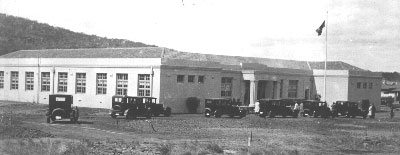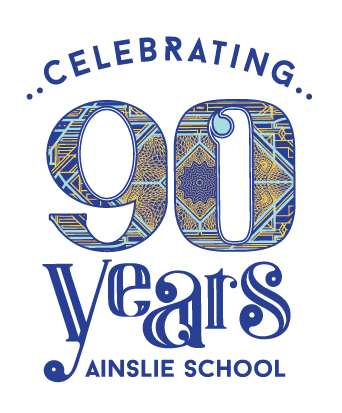- Synopsis
- Interesting Facts and Architectural Features
- Our Traditions
- Historical Image Gallery
- Sister Schools
- Oral Histories and Alma Mater


As one of Canberra's oldest schools, Ainslie has acquired the rich traditions and sense of purpose that has endeared it to a succession of children, parents and staff.
The opening of Ainslie School in 1927 was the first official act of the Prime Minister, Stanley Bruce, on his arrival in the newly established National Capital.
Ainslie has always been a very vibrant school with a strong sense of community, making it a focal point within the surrounding suburbs. The involvement of parents and the community is highly valued at Ainslie and from its inception has been one of the most distinctive aspects of the school.
"A Day in September 1927"
by the late Hector Kinloch - a former parent
Gathered at the front of the Ainslie Public School was a large concourse including Cabinet Ministers, their wives, government officers, scholars, and a representative gathering of parents, citizens and visitors. Herbert Ives (13 years and 11 months) was the oldest boy, formerly of Telopea School; Bessie Williams (12 years and 8 months) the oldest girl, formerly from a school in Victoria. The youngest boys were 5 year olds Richard Barrett, John Doherty and Walter Macauley. The youngest pupil of all was Jeanne Lucas of Braddon, only 4 years and 3 months. They were part of the crowd which surrounded the flagpole at the front of the main entrance.
The Prime Minister, accompanied by Mrs Bruce was welcomed by Sir John Butters, the Chief Commissioner of the Capital Territory. After the unfurling of the flag to the strains of Advance Australia Fair sung by the pupils, Sir John noted that this was a red letter day, signalised by the first official act of the Prime Minister in the new capital. Sir John thought that this must be unique in the history of any school in the world.
Mr Bruce, the Prime Minister, then opened the main door of the building and declared the school officially open. The Prime Minister also referred to the unusual circumstances that this was his first act of an official nature in Canberra. He expressed pride in the growing educational system in the new capital which already had thirteen schools. Mr Bruce stressed the need for enterprise and initiative. The students, he said, must realise the privilege of being citizens of this great country. He urged chivalry, self-sacrifice and fairness in playing the game. Try and remember this day in your lives, he concluded.
Sir John Butters then announced that the Prime Minister and the members of the Cabinet, wishing to show their interest in the school in a concrete way, had subscribed to present a prize to the pupils, half for educational attainments and half for sport.
A vote of thanks was then proposed by Colonel J.T.H. Goodwin, chairman of the school committee. This was seconded by Mr C.E. Francis, chairman of the Child Welfare and School Committee. Mr Francis announced that a sum of £50 had been given by Mr John Deans for investment for all time for the purchase of prizes annually. Mr Francis hoped that one day a fine university would be established in Canberra. Before inspecting the school Mr Bruce called for the granting of a holiday. (Cheers).
What kind of school did Mr Martin, the headmaster, show to the Cabinet? The building of clean, simple lines contained eight classrooms each meant to accommodate fifty pupils; also a very large Kindergarten classroom (34 feet 9 inches by 26 feet 6 inches) meant for one hundred pupils. The school included what was, for its time, spacious, even lavish, cloakrooms, playgrounds and staff room. The building itself was steam-heated with the latest methods of ventilation and up-to-date school furniture.
A school had been launched successfully on a pleasant Spring day (44.7 deg F minimum,67.4 deg F maximum with no rainfall) in a new suburb in a growing city.
Ainslie School celebrated it's 90th birthday in 2017. Click here for further information.

